115 books about Art and society and 6
start with S
115 books about Art and society and 6
115 books about Art and society
6 start with S start with S
6 start with S start with S
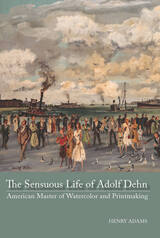
The Sensuous Life of Adolf Dehn
American Master of Watercolor and Printmaking
Henry Adams
University of Missouri Press, 2020
Adolf Dehn belongs to a group of distinguished midcentury American artists who were eclipsed by Abstract Expressionism and the following movements in American art. His lithographs of the Roaring Twenties introduced a note of social satire into American printmaking. He was one of the most gifted and innovative printmakers of the American Scene movement of the 1930s and one of the most significant American watercolorists.
In this wide-ranging biography, Henry Adams explores how a once central figure can come to be forgotten. Noting that Dehn’s watercolor Spring in Central Park has been widely reproduced on calendars, postcards, and other Metropolitan Museum of Art souvenirs, Adams asks why it is that some artists are celebrated as key figures while others, even those who created images that form an integral part of our visual culture, are relatively unknown. With his account of the life of the prolific and influential Dehn, and a look at the circles of artists and writers in which Dehn moved, Adams helps to fill in what he calls the “secret or subterranean history of art.”
In this wide-ranging biography, Henry Adams explores how a once central figure can come to be forgotten. Noting that Dehn’s watercolor Spring in Central Park has been widely reproduced on calendars, postcards, and other Metropolitan Museum of Art souvenirs, Adams asks why it is that some artists are celebrated as key figures while others, even those who created images that form an integral part of our visual culture, are relatively unknown. With his account of the life of the prolific and influential Dehn, and a look at the circles of artists and writers in which Dehn moved, Adams helps to fill in what he calls the “secret or subterranean history of art.”
[more]
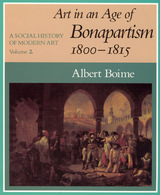
A Social History of Modern Art, Volume 2
Art in an Age of Bonapartism, 1800-1815
Albert Boime
University of Chicago Press, 1990
In this second volume, Albert Boime continues his work on the social history of Western art in the Modern epoch. This volume offers a major critique and revisionist interpretation of Western European culture, history, and society from Napoleon's seizure of power to 1815. Boime argues that Napoleon manipulated the production of images, as well as information generally, in order to maintain his political hegemony. He examines the works of French painters such as Jacques-Louis David and Jean Auguste Dominique Ingres, to illustrate how the art of the time helped to further the emperor's propagandistic goals. He also explores the work of contemporaneous English genre painters, Spain's Francisco de Goya, the German Romantics Philipp Otto Runge and Caspar David Friedrich, and the emergence of a national Italian art.
Heavily illustrated, this volume is an invaluable social history of modern art during the Napoleonic era.
Stimulating and informative, this volume will become a valuable resource for faculty and undergraduates.—R. W. Liscombe, Choice
Heavily illustrated, this volume is an invaluable social history of modern art during the Napoleonic era.
Stimulating and informative, this volume will become a valuable resource for faculty and undergraduates.—R. W. Liscombe, Choice
[more]
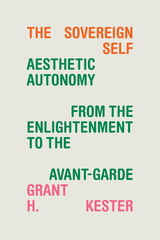
The Sovereign Self
Aesthetic Autonomy from the Enlightenment to the Avant-Garde
Grant H. Kester
Duke University Press, 2023
In The Sovereign Self, Grant H. Kester examines the evolving discourse of aesthetic autonomy from its origins in the Enlightenment through avant-garde projects and movements in the nineteenth and twentieth centuries. Kester traces the idea of aesthetic autonomy—the sense that art should be autonomous from social forces while retaining the ability to reflect back critically on society—through Kant, Schiller, Hegel, Marx, and Adorno. Kester critiques the use of aesthetic autonomy as the basis for understanding the nature of art and the shifting relationship between art and revolutionary praxis. He shows that dominant discourses of aesthetic autonomy reproduce the very forms of bourgeois liberalism that autonomy discourse itself claims to challenge. Analyzing avant-garde art and political movements in Russia, India, Latin America, and elsewhere, Kester retheorizes the aesthetic beyond autonomy. Ultimately, Kester demonstrates that the question of aesthetic autonomy has ramifications that extend beyond art to encompass the nature of political transformation and forms of anticolonial resistance that challenge the Eurocentric concept of “Man,” upon which the aesthetic itself often depends.
[more]
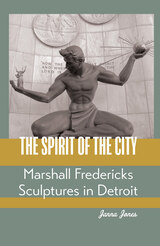
The Spirit of the City
Marshall Fredericks Sculptures in Detroit
Janna Jones
Michigan State University Press, 2023
Marshall Fredericks’s Detroit sculptures capture the spirit of the Motor City and its dramatic transformation from the 1950s to the present day. In this book, Janna Jones analyzes eight of these enormous works of public art, situating them and their structures in metro Detroit’s distinctive midcentury milieu and bringing much-needed critical attention to this sculptor’s oeuvre. Sadly, some of these artworks have suffered along with the city as it shrank from its postwar zenith. Both the buildings and the sculptures erected for them deserve to be rescued from neglect, and then maintained and preserved for the future.
[more]
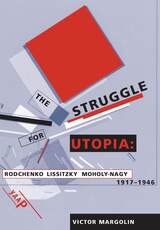
The Struggle for Utopia
Rodchenko, Lissitzky, Moholy-Nagy, 1917-1946
Victor Margolin
University of Chicago Press, 1997
Following World War I, a new artistic-social avant-garde emerged with the ambition to engage the artist in the building of social life. Through close readings of the works of Alexander Rodchenko, El Lissitzky, and László Moholy-Nagy whose careers covered a broad range of artistic practices and political situations, Victor Margolin examines the way these three artists negotiated the changing relations between their social ideals and the political realities they confronted. Focusing on the difficult relationship between art and social change, Margolin brings important new insights to the understanding of the avant-garde's role in a period of great political complexity.
"An ambitious effort. This book puts the masters of European Modernism into perfect focus as inventors, propagators, and practitioners of a visual language that continues to hold sway over contemporary graphic style."—Steven Heller
"Worth the wait. . . . Margolin usefully presents what he calls the 'failed hope' of this movement in this valuable effort."—Publishers Weekly
"An ambitious effort. This book puts the masters of European Modernism into perfect focus as inventors, propagators, and practitioners of a visual language that continues to hold sway over contemporary graphic style."—Steven Heller
"Worth the wait. . . . Margolin usefully presents what he calls the 'failed hope' of this movement in this valuable effort."—Publishers Weekly
[more]
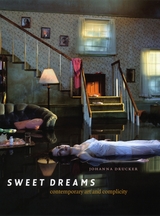
Sweet Dreams
Contemporary Art and Complicity
Johanna Drucker
University of Chicago Press, 2005
Johanna Drucker's "sweet dream" is for a new and more positive approach to contemporary art. Calling for a revamping of the academic critical vocabulary used to discuss art into one more befitting current creative practices, Drucker argues that contemporary art is fully engaged with material culture—yet still struggling to escape the oppositional legacy of the early twentieth-century avant-garde.
Drucker shows that artists today are aware of working within the ideologies of mainstream culture and have replaced avant-garde defiance with eager complicity. Finding their materials at flea markets or exploring celebrity culture, contemporary artists have created a vibrantly participatory movement that exudes enthusiasm and affirmation—all while critics continue to cling to an outmoded vocabulary of opposition and radical negativity that defined modernism's avant-garde. At the cutting edge of new media research, Drucker surveys a wide range of exciting contemporary artists, demonstrating their clear departure from the past and petitioning viewers and critics to shift their terms and sensibilities as well. Sweet Dreams is a testament to the creative processes and self-conscious heterogeneity of art today as well as a revolutionary effort to solicit collaboration that will encourage the production of imaginative thought and contribute to contemporary life.
Drucker shows that artists today are aware of working within the ideologies of mainstream culture and have replaced avant-garde defiance with eager complicity. Finding their materials at flea markets or exploring celebrity culture, contemporary artists have created a vibrantly participatory movement that exudes enthusiasm and affirmation—all while critics continue to cling to an outmoded vocabulary of opposition and radical negativity that defined modernism's avant-garde. At the cutting edge of new media research, Drucker surveys a wide range of exciting contemporary artists, demonstrating their clear departure from the past and petitioning viewers and critics to shift their terms and sensibilities as well. Sweet Dreams is a testament to the creative processes and self-conscious heterogeneity of art today as well as a revolutionary effort to solicit collaboration that will encourage the production of imaginative thought and contribute to contemporary life.
[more]
READERS
Browse our collection.
PUBLISHERS
See BiblioVault's publisher services.
STUDENT SERVICES
Files for college accessibility offices.
UChicago Accessibility Resources
home | accessibility | search | about | contact us
BiblioVault ® 2001 - 2024
The University of Chicago Press









